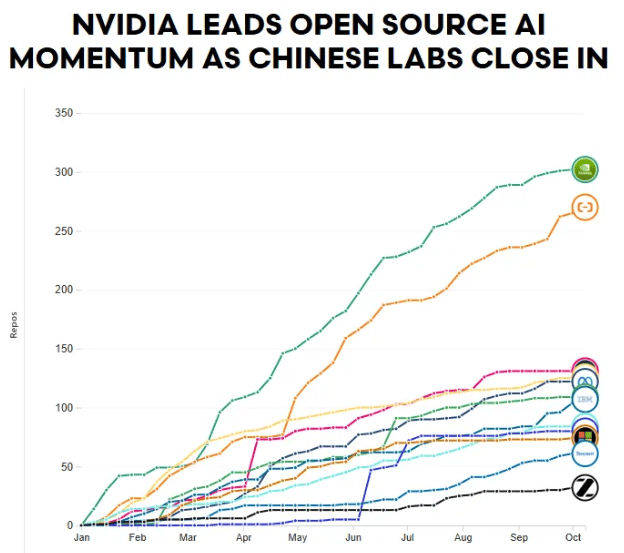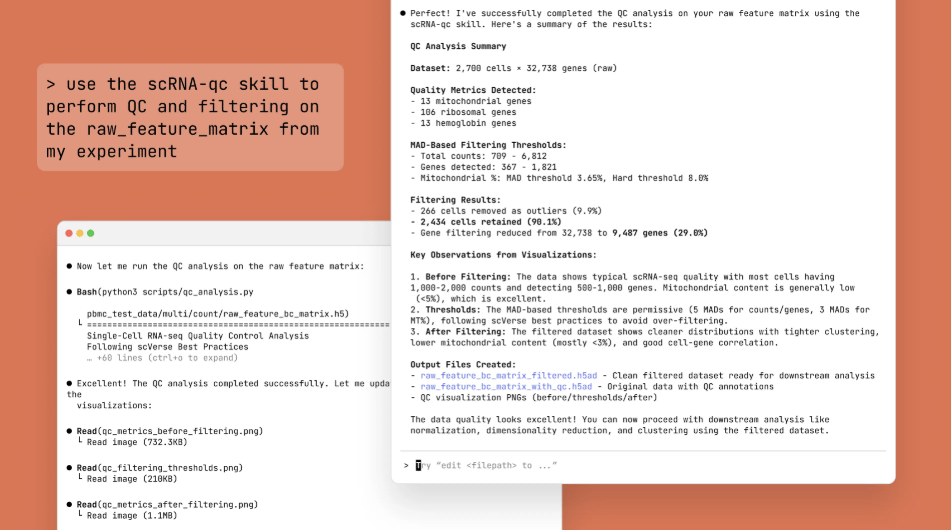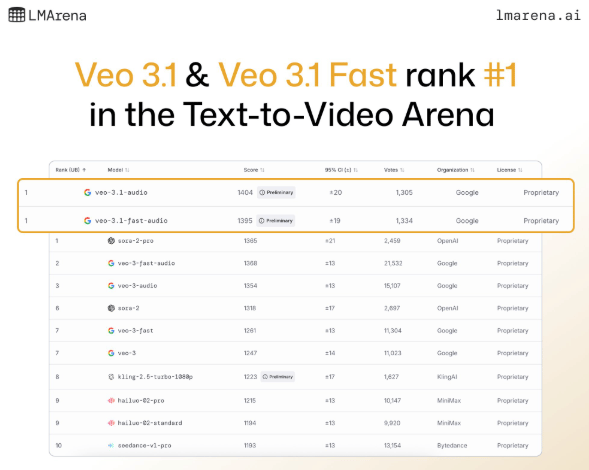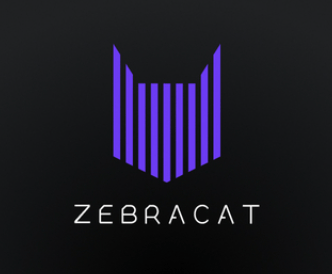
Dear Readers,
Ever get the sense that robots, not apps, are about to take over your feed? This week, the lines between code and body blurred again — from DeepMind’s Veo rewriting the rules of video editing, to Anthropic’s Claude stepping into the lab as a full-fledged research assistant. Even AWS reminded us how fragile our digital world is, as a single outage sent half the internet offline for hours. The momentum - and the tension - in AI has never felt more alive.
In today’s issue, we explore how AI agents are accelerating science, why open-source labs in China are closing in on NVIDIA, and what real-time speech means for the next generation of humanoid robots. You’ll also find data, rumors, and a graph that says more than a thousand press releases. Settle in — today’s stories trace the frontier where intelligence stops being virtual and starts taking shape.
In Today’s Issue:
🔬 Anthropic's Claude for Life Sciences empowers researchers
🤖 1X is set to reveal their new household robot on Oct. 28
🗣️ The new F.03 robot introduces real-time speech
🍎 Apple's latest clip hints at a potential partnership
✨ And more AI goodness…
All the best,



NVIDIA Drives Open Source AI Surge
The open-source AI ecosystem is rapidly expanding, moving from closed systems to a vast community model with over a million new repositories in just 90 days. NVIDIA has taken a leadership role by contributing major models and infrastructure, while Chinese players such as Alibaba Cloud (with its Qwen family), Baidu and ByteDance are closing in fast.

AWS Outage Shakes Major Internet Services
A massive outage at Amazon Web Services (AWS) hit around 2:40 am ET / 7:40 am BST, taking down or impairing services such as Snapchat, Venmo, Reddit, and Ring (and by extension apps relying on AWS). The root issue appears tied to AWS’s DNS and EC2 / Lambda launch throttles in the US-EAST-1 region, causing widespread knock-on disruption.

Veo Redefines Video Scene Editing
Google DeepMind’s Veo now allows creators to seamlessly add or remove elements within a video while preserving realism. The AI automatically manages lighting, shadows, and background reconstruction, making edits appear natural. This update streamlines post-production for filmmakers and visual creators, enabling precise, professional-level control without complex tools.

Literature review & hypothesis generation with Claude


The Takeaway
👉 Claude for Life Sciences integrates domain-specific connectors (e.g., single-cell data, spatial biology) enabling non-computational researchers to access complex tools via natural language.
👉 The model Sonnet 4.5 (and its siblings) outperforms previous versions on scientific benchmarks, suggesting real gains in accuracy and utility.
👉 This signals a shift: generative AI moving into regulated, high-stakes fields — expect increased scrutiny on safety, compliance and alignment.
👉 For practitioners and AI creators, the practical implication is clear: build pipelines with domain-specific wrappers and interfaces if you want usage beyond toy demos.
Breaking into the complex world of biomedical research, Anthropic has launched Claude for Life Sciences, a specialised version of its flagship model designed to assist scientists rather than replace them.

The idea is simple yet powerful: imagine the tedious manual work of analysing thousands of research papers, writing up protocols, or cleaning genomic data, now conversational, thanks to Claude’s improved “Agent Skills” and direct connectors to platforms such as 10x Genomics’ single-cell tools. Using a natural-language interface, researchers can query datasets, summarise literature, or generate hypotheses in minutes rather than days.

For the AI community, this matters because it’s a real-world test of LLMs and agents moving from general domains into high-stakes scientific workflows, health, drugs, life sciences. It’s an example of AI shifting from “chatbot” to “scientific collaborator”.
Why it matters: this transition shows how generative AI is stepping into specialized, high-value domains outside pure text generation. And because if tools like this scale, they could reshape research workflows, time-to-insight, and ultimately innovation cycles in life sciences.
Sources:

Attention spans are shrinking. Get proven tips on how to adapt:
Mobile attention is collapsing.
In 2018, mobile ads held attention for 3.4 seconds on average.
Today, it’s just 2.2 seconds.
That’s a 35% drop in only 7 years. And a massive challenge for marketers.
The State of Advertising 2025 shows what’s happening and how to adapt.
Get science-backed insights from a year of neuroscience research and top industry trends from 300+ marketing leaders. For free.


Googles latest Veo 3.1 now ranks #1 in both Text-to-Video and Image-to-Video leaderboards.

New 1X-Robot on 10/28!
1X is going to reveal their new Robot next tuesday. The clip suggests that the focus will be on the household.

Real-Time Speech Powers Robot UI
The new F.03 robot introduces real-time speech-to-speech interaction, aiming to make voice the default interface between humans and machines. Equipped with a 4× stronger speaker and enhanced microphones, it delivers clearer, faster, and more natural conversations—bringing human-robot communication closer to effortless dialogue.

Apple goes into humanoid robotics?
The latest Apple clip shows a robot from X1, who have also announced that they will be unveiling their new robot next Tuesday.
Is Apple entering into a partnership with X1? X1's comment suggests so.







